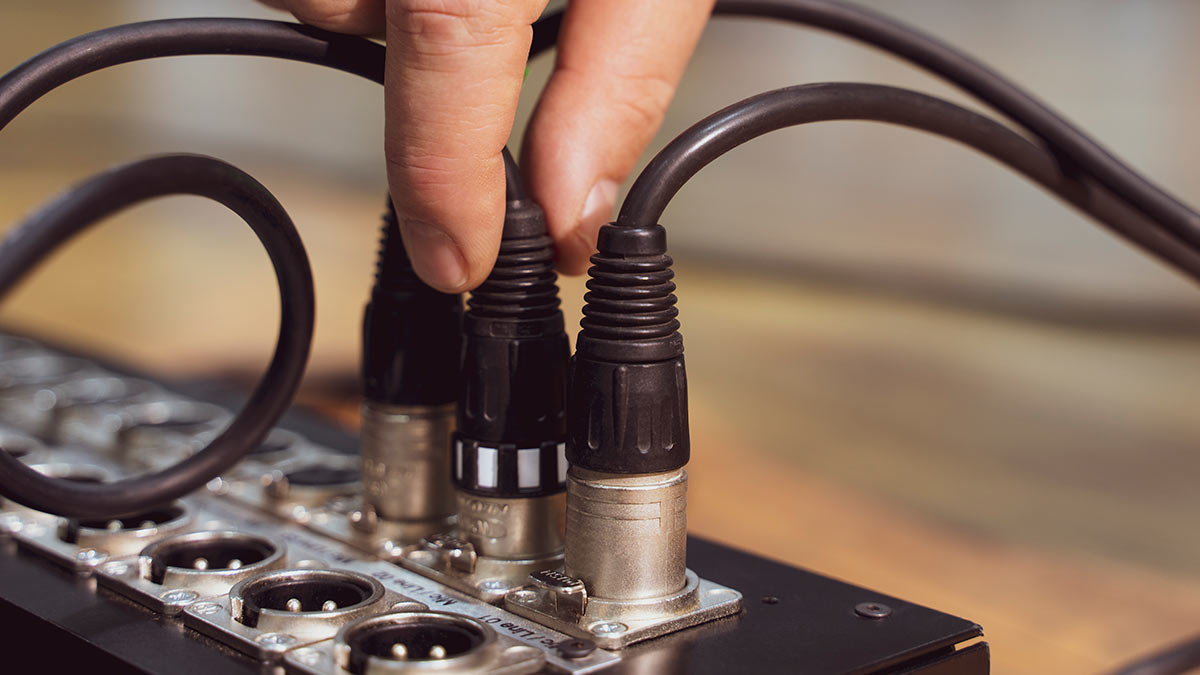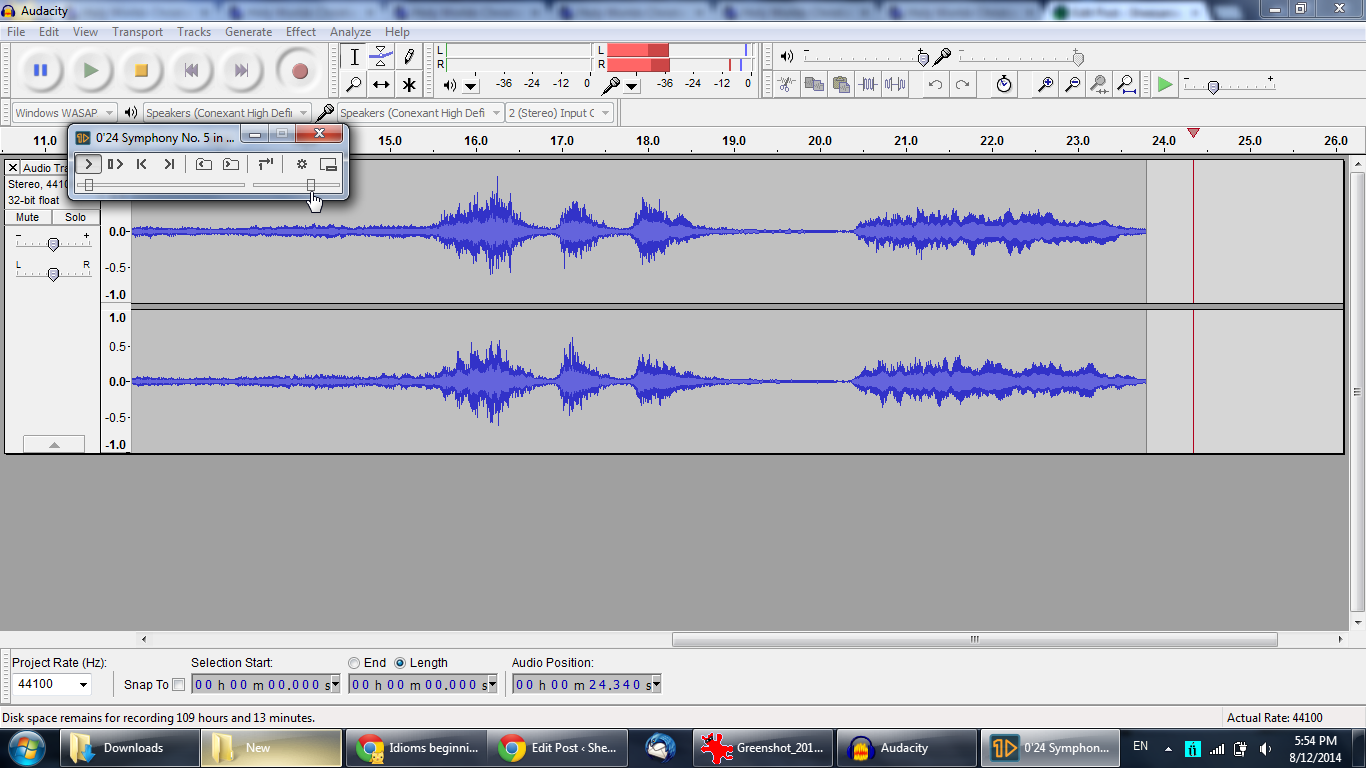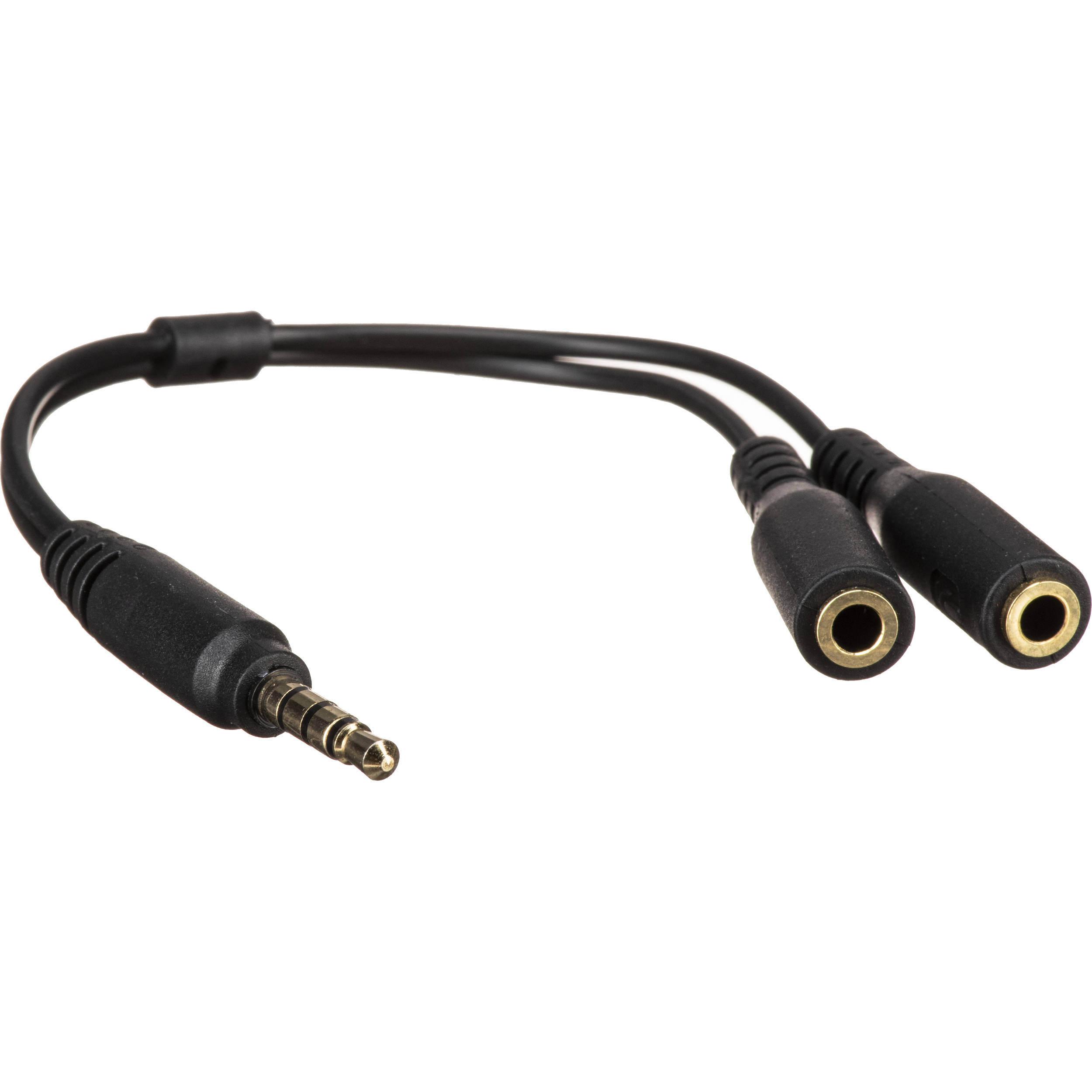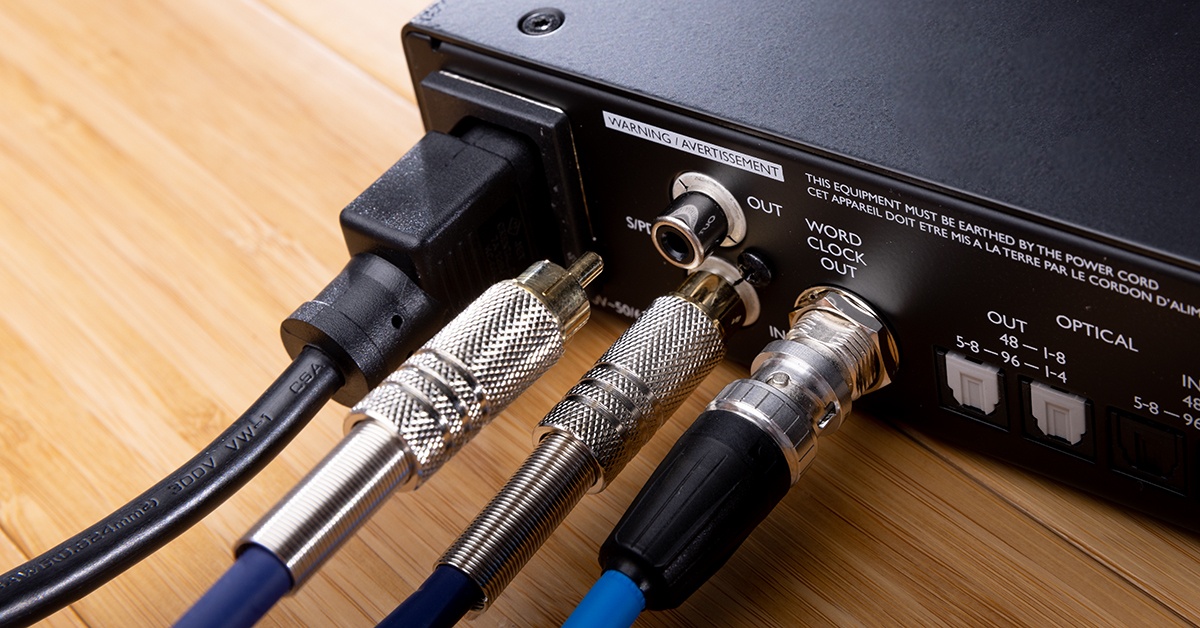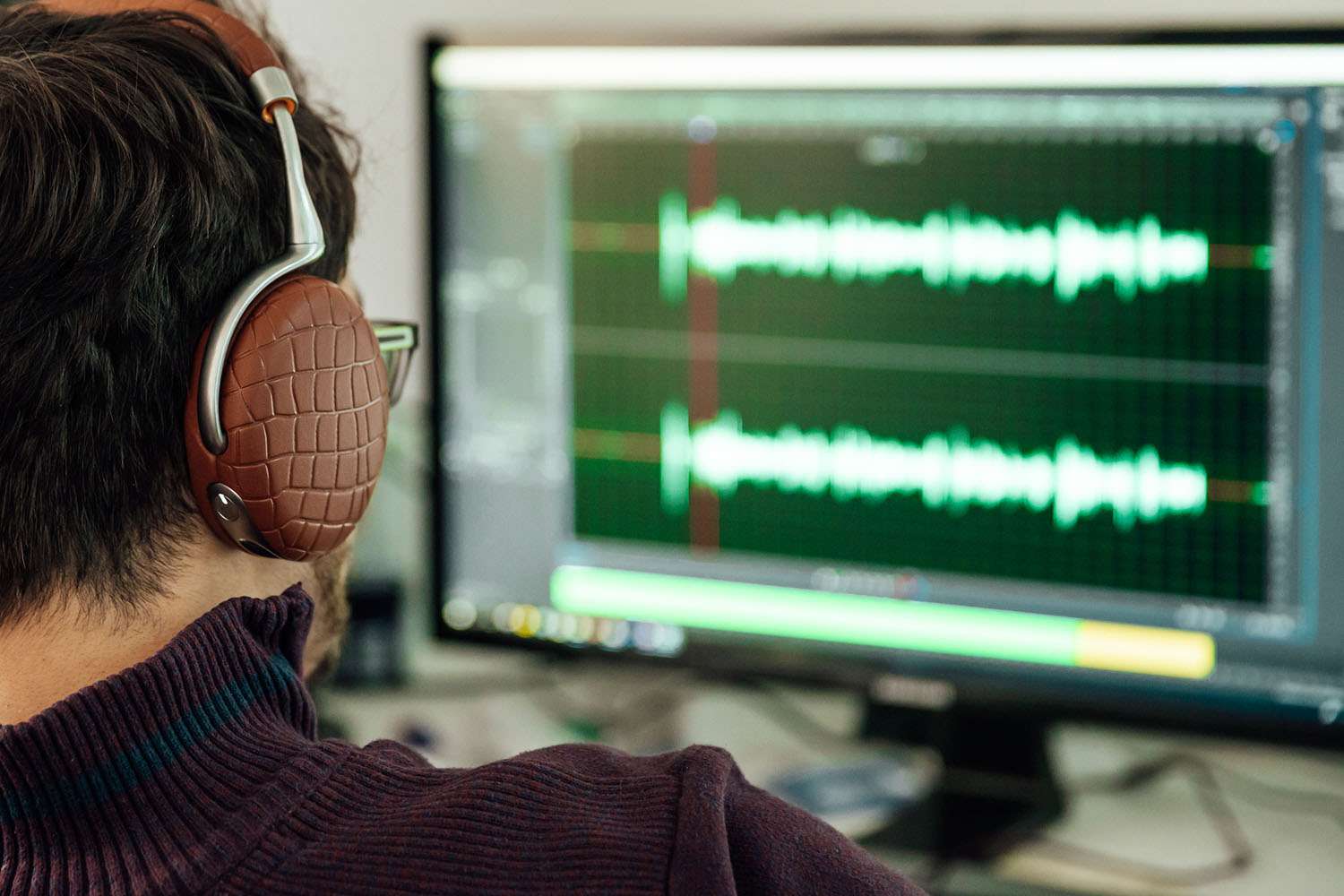Home>Production & Technology>Audio Cable>Where Is Virtual Audio Cable
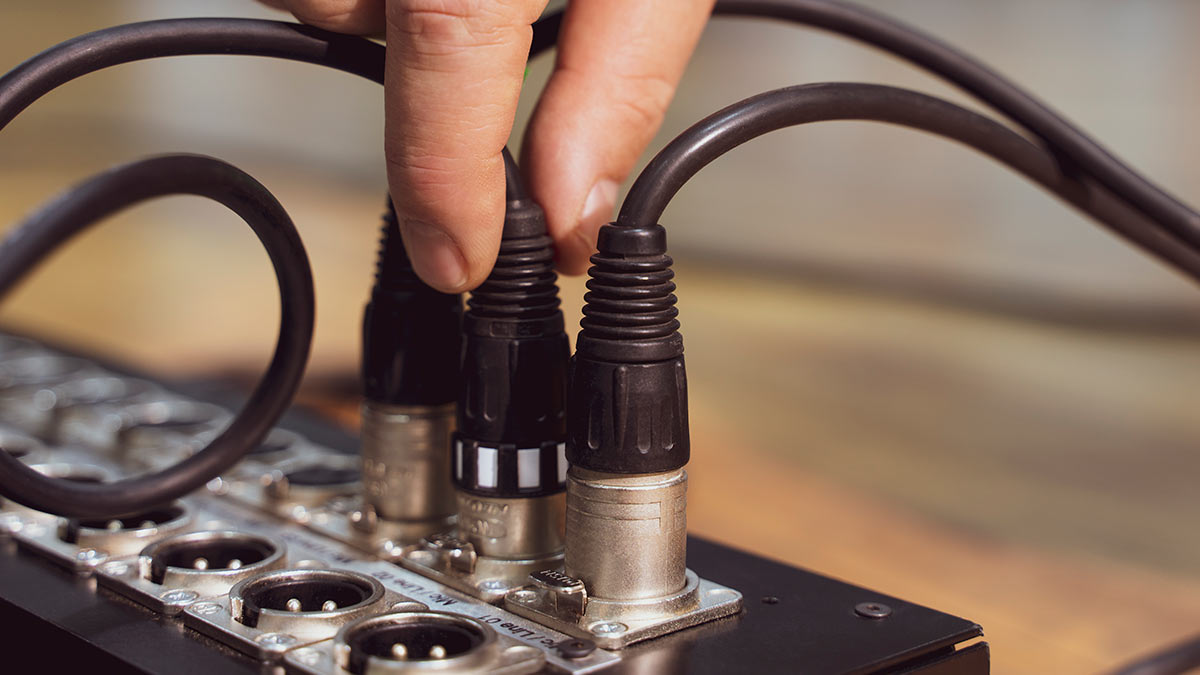

Audio Cable
Where Is Virtual Audio Cable
Modified: February 19, 2024
Looking for virtual audio cable? Learn where to find it and how to use it to enhance your audio experience.
(Many of the links in this article redirect to a specific reviewed product. Your purchase of these products through affiliate links helps to generate commission for AudioLover.com, at no extra cost. Learn more)
Table of Contents
Introduction
Welcome to the world of virtual audio cables! Whether you’re a professional audio engineer, a content creator, or just a tech-savvy individual looking to enhance your audio experience, virtual audio cables are a game-changer. They provide a versatile and flexible solution for routing audio signals between different applications and devices on your computer.
In this article, we will delve into the world of virtual audio cables, exploring what they are, how they work, and how you can benefit from using them. Whether you’re a musician mixing tracks, a podcaster recording interviews, or a gamer wanting to capture crystal-clear audio, virtual audio cables will become an essential tool in your arsenal.
Virtual audio cables are software-based tools that allow you to create virtual channels or cables within your computer’s audio system. These virtual cables act as a bridge, enabling you to route audio signals between various applications, devices, and sources on your computer. This means you can redirect the audio from one application to another, record audio from multiple sources simultaneously, or monitor audio in real-time with enhanced flexibility and control.
Imagine being able to route the audio output of a music production software into a live streaming application, or sending the audio from a gaming console to your recording software to capture your commentary. With virtual audio cables, you can accomplish all of this and more.
The Advantages of Using Virtual Audio Cables
Virtual audio cables offer several advantages that make them a must-have tool for audio enthusiasts and professionals alike. Here are some of the key benefits:
- Flexible Audio Routing: Virtual audio cables allow you to easily reroute audio between different applications and devices, giving you greater control over your audio setup.
- Multi-Channel Recording: With virtual audio cables, you can simultaneously record audio from multiple sources, such as microphones, music players, or online streaming services.
- Real-Time Monitoring: Virtual audio cables enable you to monitor audio in real-time, making them ideal for musicians who need to listen to their own playback while recording.
- Enhanced Audio Mixing: By utilizing multiple virtual audio cables, you can create complex audio setups for mixing and processing, allowing for advanced sound design and production.
- Compatibility: Virtual audio cables are compatible with a wide range of audio software and devices, making them a versatile solution for any audio workflow.
Now that we understand the advantages of using virtual audio cables, let’s explore the inner workings of these powerful tools and how they can be set up on your computer.
Understanding Virtual Audio Cable
Before we dive into the technical aspects of virtual audio cables, it’s important to have a clear understanding of what they are and how they function. Simply put, virtual audio cables are software-based tools that create virtual channels or cables within your computer’s audio system. These virtual cables act as a bridge, allowing you to route audio signals between different applications, devices, and sources.
Virtual audio cables operate at the kernel level of your computer’s audio system, meaning they can intercept and redirect audio data in real-time. This low-level integration ensures minimal latency and high-quality audio transmission. It’s important to note that virtual audio cables do not rely on physical cables or connections. Instead, they work within your computer’s software infrastructure, making them highly flexible and adaptable to your specific audio needs.
When you install a virtual audio cable software, it creates a specified number of virtual cables on your system. These cables function as separate audio channels that can be named and configured as per your requirements. Think of them as virtual pipelines where audio can flow freely between different applications and devices.
Each virtual audio cable has an input and output endpoint. The input endpoint acts as the source of the audio, while the output endpoint represents the destination. By connecting the input and output endpoints of different virtual cables, you can establish audio connections and route audio signals between various applications and devices.
It’s important to understand that virtual audio cables do not alter or process the audio signal in any way. Their primary purpose is to provide a pathway for audio flow. Additional audio processing and manipulation can be done using dedicated audio software or plugins.
Virtual audio cables come with different configuration options that allow you to customize their behavior. You can adjust parameters such as sample rate, bit depth, buffer size, and more to optimize audio performance according to your specific requirements.
Furthermore, virtual audio cables are typically equipped with sophisticated features like mixing, channel splitting, and loopback functionality. These features expand the capabilities of virtual audio cables, providing you with even more flexibility and control over your audio setup.
Now that we have a basic understanding of virtual audio cables, let’s explore how they actually work and how you can set them up on your computer system.
How Does Virtual Audio Cable Work?
Virtual audio cables work by creating virtual audio channels that allow the routing of audio signals between different applications and devices on your computer. To understand how they work, let’s break down the process step by step:
- Installation: Virtual audio cable software needs to be installed on your computer. Once installed, it creates virtual audio cables that can be configured and used for audio routing.
- Virtual Cables: The software creates virtual audio cables, each with an input and output endpoint. These virtual cables act as conduits for audio signals.
- Audio Sources: The audio sources in your system, such as music players, microphones, or system sounds, are connected to the input endpoints of the virtual audio cables.
- Destination Applications or Devices: The output endpoints of the virtual audio cables are connected to the applications or devices where you want the audio to be routed. This could be a recording software, a communication tool, or an audio playback application.
- Audio Routing: Once the connections are established, the virtual audio cables act as bridges, allowing the audio signals to flow from the source applications or devices to the destination applications or devices.
It’s important to note that virtual audio cables work on a software level within your computer’s audio infrastructure. They intercept and redirect audio data in real-time, ensuring minimal latency and high-quality audio transmission.
Virtual audio cables also offer additional features that enhance their functionality, such as mixing and channel splitting. With these capabilities, you can create complex audio setups, merge audio signals, or split them to different destinations.
Another powerful feature of virtual audio cables is loopback functionality. This allows you to capture the audio from one application and send it back as an input to another application. For example, you can record audio from a web browser and then use that recorded audio as input for a video editing software.
Overall, virtual audio cables provide a versatile and flexible solution for audio routing, allowing you to customize and optimize your audio setup according to your specific needs. By using virtual audio cables, you can integrate and streamline various audio sources and destinations, making it easier to record, mix, and enhance your audio projects.
Now that we have an understanding of how virtual audio cables work, let’s move on to the next section, where we’ll explore the installation and setup process for virtual audio cables.
Installation and Setup Guide
Setting up virtual audio cables on your computer is a straightforward process. Follow these steps to install and configure virtual audio cables:
- Research and Choose a Virtual Audio Cable Software: There are several virtual audio cable software options available, so it’s important to research and choose one that best suits your needs. Popular options include Virtual Audio Cable, VB-Cable, and Voicemeeter Banana. Visit the respective websites, read user reviews, and compare features before making a decision.
- Download and Install the Software: Once you have selected a virtual audio cable software, download it from the official website. Run the installation file and follow the on-screen instructions to install the software on your computer. Ensure that you download and install the appropriate version for your operating system.
- Configure Virtual Audio Cables: After installation, launch the virtual audio cable software. You’ll be presented with the configuration options for setting up virtual audio cables. Specify the number of virtual cables you want to create. You may also have the option to customize other parameters such as sample rate, buffer size, and more. Adjust these settings according to your specific audio requirements.
- Connect Audio Sources and Destinations: Once the virtual audio cables are configured, you can start connecting audio sources and destinations. For example, if you want to route audio from your microphone to your recording software, connect the microphone to the input endpoint of one virtual audio cable and connect the output endpoint of that cable to the recording software. Repeat this process for each audio source and destination you want to connect.
- Test and Adjust: After making all the necessary connections, test the audio routing by playing audio from the source applications or devices and monitoring the output in the destination applications or devices. If you encounter any issues, make sure the audio settings within the applications and operating system are properly configured to use the virtual audio cables. Adjust the volume levels and other settings as needed to achieve the desired audio quality and routing.
It’s worth noting that the specific configuration process may vary slightly depending on the virtual audio cable software you are using. All virtual audio cable software typically comes with detailed documentation and user guides to help you navigate through the installation and setup process.
Once you have successfully installed and set up virtual audio cables, you can begin harnessing the power of audio routing and enjoy the flexibility and control they provide.
In the next section, we will explore some common troubleshooting tips and solutions to help you overcome any issues you may encounter while using virtual audio cables.
Troubleshooting Virtual Audio Cable Issues
While virtual audio cables can greatly enhance your audio routing capabilities, you may occasionally encounter issues. Here are some common troubleshooting tips to help you resolve potential problems:
- Check Compatibility: Ensure that the virtual audio cable software you are using is compatible with your operating system and the applications you want to route audio to and from. Check for any compatibility requirements or updates.
- Restart Applications: If you are experiencing audio routing issues, try restarting the source and destination applications. This can often help in establishing proper connections between the virtual audio cables and the applications.
- Adjust Buffer Size and Sample Rate: If you encounter audio latency or distortion, try adjusting the buffer size and sample rate settings within the virtual audio cable software. Experiment with different values to find the optimal settings for your system.
- Verify Connections: Double-check that the audio sources are connected to the correct input endpoints of the virtual audio cables, and the output endpoints are properly connected to the desired destinations. Ensure that the cables are connected securely and functioning properly.
- Update Drivers: Outdated audio drivers can cause issues with virtual audio cables. Check for driver updates for your sound card or audio interface and install any available updates. This can help resolve compatibility issues and improve audio performance.
- Adjust Volume Levels: If you’re experiencing issues with audio levels, verify that the volume levels are properly adjusted within both the source and destination applications. Ensure that the volume is not set too low or too high, causing distortion or inaudible sound.
- Reinstall Virtual Audio Cable Software: In some cases, reinstalling the virtual audio cable software may resolve any software-related issues. Uninstall the software, restart your computer, and then reinstall it following the installation guide provided by the software developer.
- Consult Virtual Audio Cable Forums and Support: If you’re unable to resolve the issues on your own, reach out to the virtual audio cable community forums or contact the software developer’s support team. They may be able to provide specific guidance or solutions tailored to your situation.
Remember to consult the documentation and support resources provided by the virtual audio cable software developer for more in-depth troubleshooting guidance.
By following these troubleshooting tips, you can overcome common issues and ensure smooth and efficient audio routing with virtual audio cables.
In the next section, we will explore alternative virtual audio cable options, giving you more choices to consider for your audio routing needs.
Alternative Virtual Audio Cable Options
While virtual audio cables are a popular choice for audio routing, there are alternative options available that you can explore. These alternatives offer similar functionality and can serve as viable alternatives based on your specific needs. Here are some notable virtual audio cable alternatives:
- VB-Audio Virtual Cable: VB-Audio Virtual Cable is a well-regarded virtual audio cable software that provides a reliable solution for audio routing. It offers multiple virtual cables, low latency, and supports various sample rates and bit depths.
- Voicemeeter: Voicemeeter is a comprehensive virtual audio mixer that includes virtual audio cables. It allows for audio routing, mixing, and processing, making it an excellent choice for advanced audio setups. Voicemeeter offers a free version, Voicemeeter Banana, and a more feature-rich version, Voicemeeter Potato.
- Loopback: Loopback is a virtual audio cable alternative specifically designed for macOS. It enables you to route audio between applications, record system audio, and create virtual audio devices. Loopback offers a user-friendly interface and powerful customization options.
- Blackhole: Blackhole is another virtual audio cable alternative for macOS. It allows you to create multiple virtual audio devices for routing and capturing audio. Blackhole is an open-source software that provides flexibility and customization options.
- Jack Audio Connection Kit: Jack Audio Connection Kit (JACK) is a cross-platform virtual audio cable alternative that focuses on low-latency audio routing and MIDI support. JACK is widely used by audio professionals and offers advanced features for precise control over audio routing.
When considering alternative virtual audio cable options, it’s essential to assess your specific requirements, such as compatibility with your operating system, desired features, and ease of use. Researching and comparing different options will help you make an informed decision that best suits your audio routing needs.
Keep in mind that each virtual audio cable alternative may have its own installation process, configuration settings, and user interface. Refer to the documentation and user guides provided by the respective software developers for detailed instructions on installation, setup, and usage.
With an abundance of virtual audio cable alternatives available, you have the flexibility to choose the one that aligns with your preferences and workflow. Experiment with different options to find the virtual audio cable alternative that best fulfills your audio routing requirements.
Now that we have explored alternative virtual audio cable options, let’s sum up our findings in the concluding section.
Conclusion
Virtual audio cables provide an incredible solution for audio routing, allowing you to route audio signals between different applications and devices on your computer. With their flexibility, virtual audio cables enable you to create complex audio setups, record from multiple sources simultaneously, and have real-time control over your audio workflow.
In this article, we have explored the world of virtual audio cables, understanding how they work and the advantages they offer. We discussed the installation and setup process, as well as troubleshooting tips to overcome common issues that may arise while using virtual audio cables.
We also introduced alternative virtual audio cable options, giving you a range of choices to consider based on your specific needs. Whether you choose VB-Audio Virtual Cable, Voicemeeter, Loopback, Blackhole, or JACK, each of these alternatives provides its own unique features and benefits.
Virtual audio cables have become an indispensable tool for audio enthusiasts, content creators, and professionals in various fields. By harnessing the power of virtual audio cables, you can enhance your audio production, recording, and playback capabilities.
Remember to choose a virtual audio cable software or alternative that aligns with your operating system, desired features, and ease of use. It’s important to carefully consider your specific needs and do thorough research to make an informed decision.
Whether you’re a musician, podcaster, streamer, or just someone who wants more control over their audio experience, virtual audio cables are an essential tool to have at your disposal. So go ahead, dive into the world of virtual audio cables, and unlock endless possibilities for your audio workflow.

